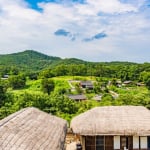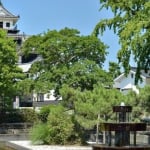Address: 2331 Tashima, Munakata City, Fukuoka Prefecture
Access by car: About 20 minutes from Kyushu Expressway Wakamiya IC / About 25 minutes from Koga IC
Official Website: http://www.munakata-taisha.or.jp
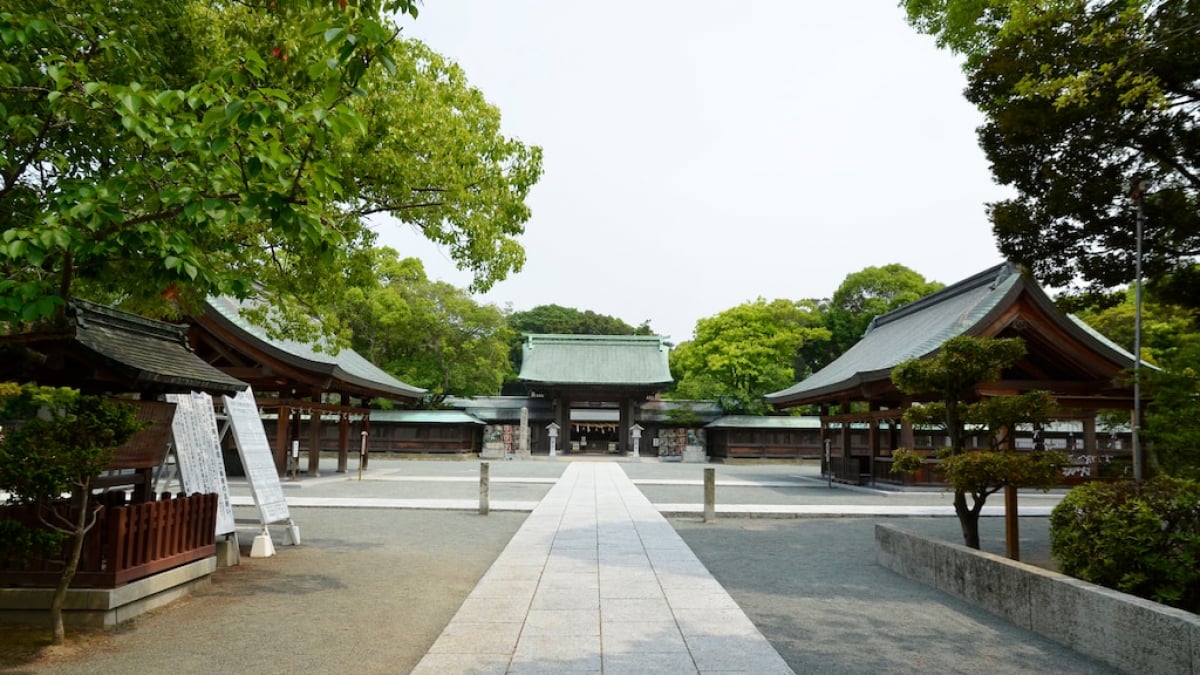
Explore Munakata Taisha: A Sacred Power Spot for Traffic Safety!
Munakata Taisha, revered as the guardian of traffic safety, has gained even more popularity after being recognized as a UNESCO World Heritage Site. This sacred shrine enshrines the three daughters of Amaterasu Omikami, known as the "Munakata Three Goddesses," each worshipped at different locations. These are Tagorihime-no-Kami who are honored at Okinoshima’s Okitsu-miya Shrine, Tagitsuhime-no-Kami is enshrined at Oshima’s Nakatsu-miya Shrine and Ichikishimahime-no-Kami is worshipped at Tashima’s Hetsu-miya Shrine on Kyushu’s mainland.
Collectively, these three shrines form Munakata Taisha, a must-visit spiritual power spot in Japan for those seeking protection on their travels.
table of contents
[x] close
Explore Munakata Taisha: A Sacred Power Spot for Traffic Safety!
1. Hetsu-miya, the Main Shrine of Munakata Taisha
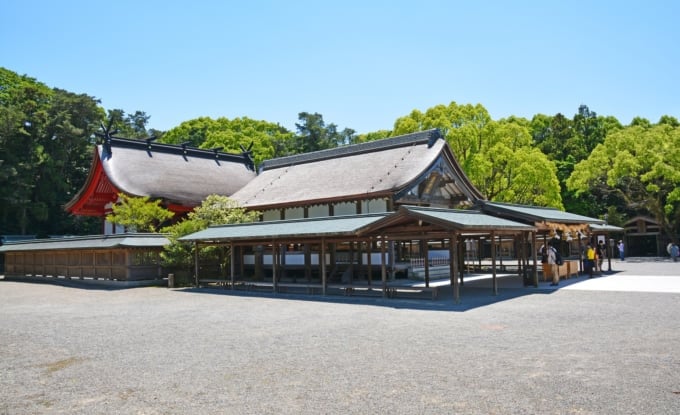
Hetsu-miya is the main shrine of Munakata Taisha, dedicated to Ichikishima-hime no Kami, the youngest of the three Munakata goddesses. Surrounded by lush greenery, the vast shrine grounds house the main hall (honden) and worship hall (haiden), as well as the Second and Third Shrines, the Takamiya Ritual Site, the Sacred Treasure Hall, and the Prayer Hall. The main hall and worship hall are designated as Important Cultural Properties of Japan, showcasing Azuchi-Momoyama period architecture, offering visitors a glimpse into history.
When visiting Hetsu-miya, be sure to complete the "San-no-miya pilgrimage". This includes worshiping at the Third Shrine (Tatsutsuhime Shrine), the Second Shrine (Tagorihime Shrine), and the Main Shrine (Ichikishima-hime Shrine). Notably, Okitsu-miya, located on Okinoshima Island, is normally inaccessible, making this shrine a rare opportunity to pray on behalf of the island’s deity.
2. Takamiya Ritual Site: A Mystical Power Spot
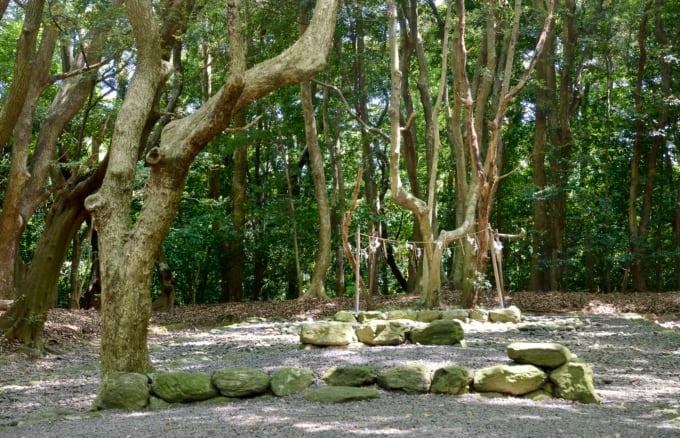
Following the Takamiya path from the main shrine, visitors will discover Takamiya Ritual Site, regarded as the holiest site of Hetsu-miya. It is believed to be the sacred place where the three Munakata goddesses first descended to Earth. Like Okinoshima Island, this is one of the few ancient ritual sites in Japan that remains without a shrine building, preserving the origins of Japanese nature worship.
Recognized as a spiritual power spot, Takamiya Ritual Site has an aura of tranquility and divine energy, attracting visitors seeking spiritual renewal. Every autumn, it hosts the Takamiya Kannabi Festival, a sacred ritual that marks the conclusion of the autumn grand festival. During this event, the enchanting dance "Eternal Elegance" (Yūkyū no Mai) is performed at night, illuminated by a soft glow, creating a mystical atmosphere.
3. Learn About the History of the Munakata Three Goddesses at the Shinpokan Museum
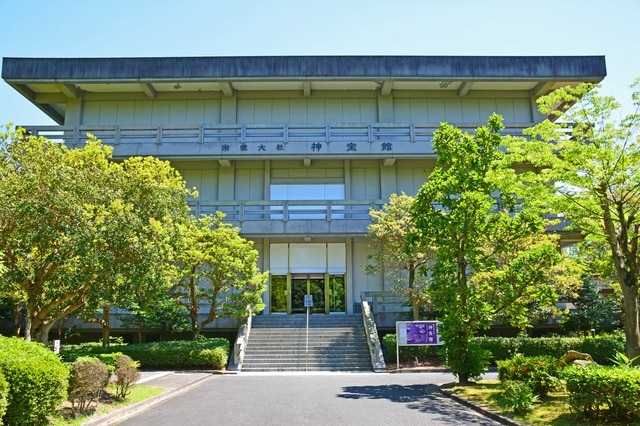
If you want to deepen your understanding of Munakata Taisha, a UNESCO World Heritage Site, learning about its main deities, the Munakata Three Goddesses, is essential. The Shinpokan Museum, located within the shrine grounds, is dedicated to showcasing the history and faith surrounding these goddesses.
The museum houses and exhibits sacred treasures and cultural artifacts excavated from Okinoshima, a sacred island where ancient rituals were performed. These discoveries were made during three excavation surveys conducted from 1954 to 1971.
Among the 100,000 ritual offerings found on Okinoshima, an astonishing 80,000 items were recognized as first-class artifacts from different historical periods and were all designated as National Treasures of Japan. Inside the museum, visitors can admire artifacts such as the Sankakubuchi Shinjukyo (triangular-rimmed bronze mirrors), gold rings with an exquisite glow, and the Munakata Taisha Archives, which reveal details about the shrine’s territorial succession and religious ceremonies held during the Nanboku-cho and Muromachi periods.
◆ Name: Munakata Taisha Shinpokan Museum
◆ Location: Inside Munakata Taisha Shrine
◆ Opening Hours: 9:00 AM – 4:30 PM (Last admission at 4:00 PM)
◆ Closed: Open year-round
◆ Admission Fee: ¥800 (General), ¥500 (High School/University Students), ¥400 (Elementary/Middle School Students)
◆ Official Website: http://www.munakata-taisha.or.jp/html/shinpoukan.html
(Prices are as of July 2019. Please check the official website for updated fees.)
4. Visit Nakatsumiya and Explore Ōshima!
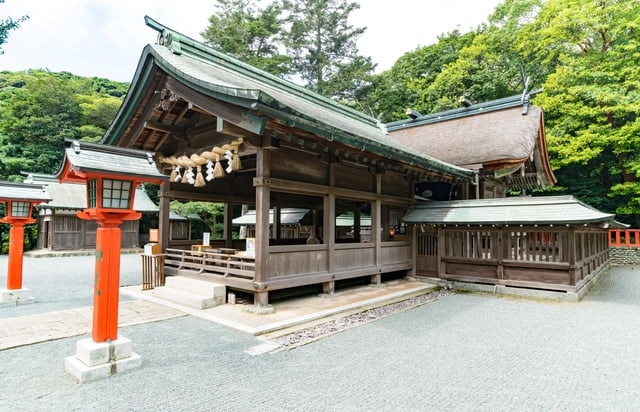
Nakatsumiya, dedicated to Tagitsu-hime-no-Kami, the second daughter of the three Munakata goddesses, is located on Ōshima, an island about 11 km off the coast of Munakata, Fukuoka. To reach Ōshima, take the municipal ferry "Shiokaze" or the "Ōshima" ferry from Konominato Port to Ōshima Port. Nakatsumiya shares an ancient connection with Okinoshima, as both were sites of sacred rituals in ancient times. The shrine sits across the sea from Hetsumiya, creating a powerful spiritual link between the two.
On a clear day, you can view Okinoshima from the Okinoshima Worship Observatory.
Ōshima is not just home to Nakatsumiya but also offers fantastic sightseeing opportunities. Cycling around the island is a great way to explore its beauty. Popular spots include the Ōshima Lighthouse and the Windmill Observation Deck, where you can enjoy breathtaking ocean views. Take in the refreshing sea breeze and immerse yourself in the serene beauty of Ōshima!
Address: 1811 Ōshima, Munakata City, Fukuoka Prefecture
Ferry Schedule:http://www.city.munakata.lg.jp/tosen/oosima.php
Official Site (Map & Access): http://www.munakata-taisha.or.jp/html/access.html
5. Okinoshima, the Sacred Island Home to Okitsu-miya Shrine
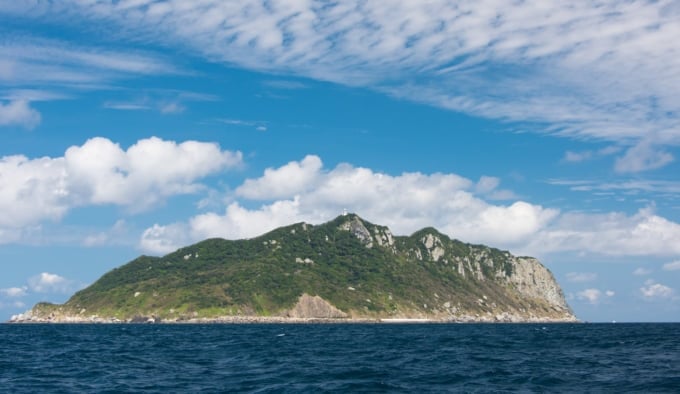
Okitsu-miya Shrine, dedicated to the eldest of the three Munakata goddesses, Tagorihime-no-Kami, is located on the remote island of Okinoshima, about 60 km off the coast of Munakata City. This sacred island, often referred to as the “Island Where Gods Dwell,” serves as the shrine's entire precinct. Okinoshima is uninhabited, and strict religious traditions have been preserved for centuries. Due to the discovery of numerous ritual artifacts and offerings to the deities, the island is often called the "Shōsō-in of the Sea," highlighting its historical and cultural significance.

However, because of its sacred nature, access to Okinoshima is highly restricted. Only a limited number of men are allowed to set foot on the island during the annual grand festival, making it inaccessible to the general public. Most worshippers visit the Okitsu-miya Yohaisho on Ōshima Island, which serves as a prayer site for those unable to travel to Okinoshima itself.
Shrine Name: Munakata Taisha Okitsu-miya
Address: Okinoshima, Oshima, Munakata City, Fukuoka Prefecture
Official Website:https://www.crossroadfukuoka.jp/event/?mode=detail&id=400000005623&isSpot=1
◎ Final Thoughts
Munakata Taisha is also known as “Michinushinomuji,” a deity believed to govern all paths and journeys. It has long been a major site for prayers, particularly for travel safety, attracting visitors from all over Japan. The shrine is famous for its traffic safety amulets, and stone-shaped offerings in the form of dolls, horses, and boats—now considered national treasures—have been dedicated for centuries. Interestingly, Munakata Taisha is recognized as the birthplace of the in-car traffic safety amulet tradition. When visiting, be sure to purchase one to ensure a safe journey back home.
RELATED ARTICLES
REGIONS
CATEGORIES
FEATURED ON Fukuoka
-

Let’s go see that famous structure! A summary of recommended tourist spots in Iizuka City
-

From Ancient Times to the Modern Era! 5 Historical Sightseeing Spots in Yukuhashi City
-

Top 10 Stylish Starbucks Stores in Japan – Scenic Views & Beautiful Designs!
-

7 recommended sightseeing spots in Ogōri City! Packed with Tanabata Legends, Frogs, and Literature
-
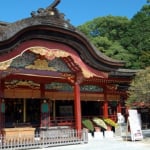
The definitive guide to sightseeing spots in Dazaifu City, Fukuoka Prefecture, to visit along with Dazaifu Tenmangu!
MOST POPULAR ON Fukuoka
-
 1
1Doha: Must-see Attractions in the Capital of Qatar
-
 2
2Toronto: 10 Things to do in this Picturesque Canadian City
-
 3
3Amarillo: A City Famous for It’s Amazing Canyons, Great History and Music
-
 4
4South Korea: Dazzling Scenery, Rich Culture and Fascinating History
-
 5
5Kuwait: A Country in Middle East Asia Famous for Hot Sand Dunes and Stunning Cityscape


